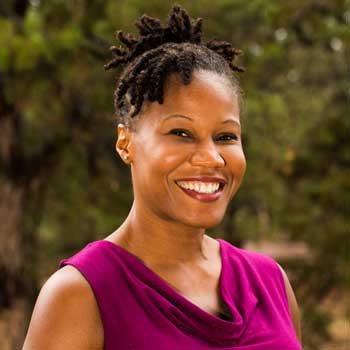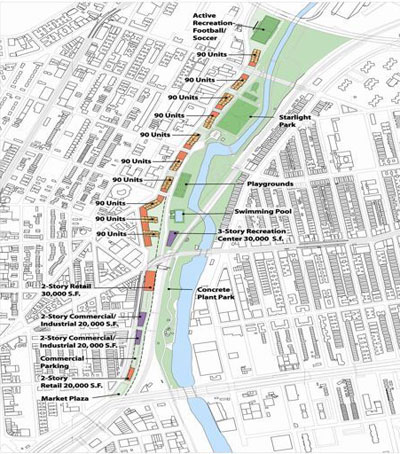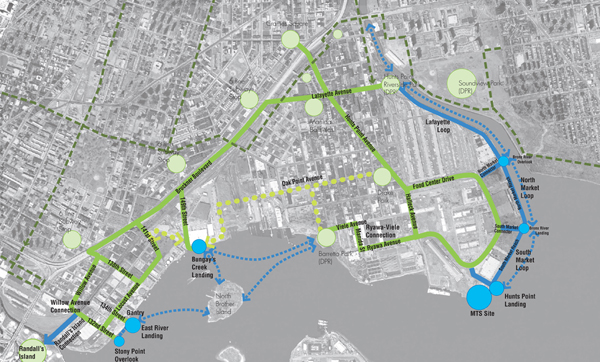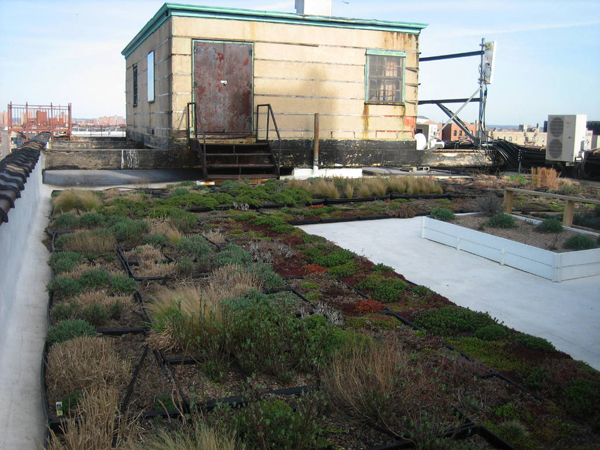News
Interview with Majora Carter, Founder, Sustainable South Bronx, and Majora Carter Group
 Image credit: Majora Carter / Delnsb
Image credit: Majora Carter / Delnsb
The focus of your organization, the Majora Carter Group is "an asset-based development model," which has been defined as "a green-collar look at the assets comprised in a given municipality or region to identify where needs are not being met." Please describe your asset-based development approach, and what this means for urban environments.
Planners, infrastructure engineers, politicians, and even social service agencies often look at areas or groups of people -- I think they like to call them "populations" -- as problems that can be solved with this or that action. It usually involves taking money from somewhere and putting it where an expert says it's needed. It is undoubtedly never enough, and it engenders a sense of competition from whomever feels it's being taken away from the "problem" that they want to solve.
If you let folks put the pieces together properly, some of the problems become assets. For example, storm water run-off is a big "problem" that engineers like to pour loads of concrete and build ever expanding treatment plants for. It has also been identified that people who live in areas where unemployment is prevalent often suffer from a lack of greenery in their lives. Studies show that it affects their sense of community pride, air quality, and self-esteem, school performance, and property values.
It turns out that trees, open green spaces, and green roofing do wonders for storm water management and take the burden off of a typical combined sewage system. These things also address the lack of greenery problems listed above, and it takes people to do the work. There are many examples like this, and they usually boil down to choosing the more labor intensive options out there because they help solve our poverty problem. When you start putting people first, many of the "problems" that others are trying to solve start to evaporate.
The organization you founded – Sustainable South Bronx, was critical to bringing green roofs to the South Bronx. Most recently, Sustainable South Bronx played a key role in efforts to create green roof tax abatement of $4.50 / per square foot. What impact do you think this legislation will have on the development of urban green roofs in NYC? Are these types of incentives enough? What else needs to be done from a policy and regulatory point of view so that there are green roofs across NYC?
That was a great victory for the S.W.I.M. coalition that SSBx's Policy Director Rob Craudereuff convened. The same group also passed NYC Local Law 5, which simply requires that all future storm water management plans include a cost-benefit analysis of green vs. traditional solutions. The tax abatement is good for the money it provides, but it also serves as a communications tool for green roofing. Having it sanctioned by the government in that way is a real seal of approval that helps get people over the fear factor that comes with the unfamiliar.
I think the City will save money if they pay in full for green roofs in certain water shed areas, and if you take a look at the Urban Heat Island Mitigation study that I co-wrote with Rob and Joyce Rosenthal at Columbia University Earth Institute, air quality goes up and energy consumption goes down when green roofing is deployed on a massive scale. It's up to advocates of all stripes to use things like Local Law 5 to make the cost-benefit argument effective now. I have great confidence that more and more voices will enter the debate. I think if we mandate anything, it's likely to get mis-directed or shot down. The newer urbanists coming up through the ranks are always so impressive to me with their easy perspective on how it all fits together. The ball is in motion and it's just a matter of time before migratory birds light on the roofs of NYC as they make their journeys.
What do you see as the main value of green roof demonstration projects?
At this point, green roof demonstration projects have about as much value as another study to see if intensive diesel and powerplant exhaust give kids asthma -- none. We know fossil fuel emissions are bad and we know green roofs work. By continually calling for repetitive studies and "demonstrations", we imply that there is uncertainty. Kind of like what the oil companies did with global warming. The very word "demonstration" implies untested; the "study" implies a surprise around the corner. We need change on a massive scale. We might not get it perfectly right immediately, but we certainly know that we have not been doing a good job with regard to our social or environmental future so far. If you know something works, do it -- and do it big, bold, and beautifully and make an impact!
What is the status of the South Bronx Green way project?
There is $20 million appropriated and the Hunts Point Riverside Park is built (and very well too!); and more and more bike lanes keep getting painted along the routes, but it is taking sooooo long. It's amazing how fast an ugly building can go up, and how long it takes to make parks.
What do you think of the High Line being developed in Chelsea, Manhattan? Are there any similarities with the Sheridan Expressway project you are working on, in that both projects seek to turn abandoned transportation infrastructure into parks, or green infrastructure?
Similarities? The city wanted to tear
down the High Line, but we have to work really hard to get the Sheridan
Expressway decommissioned.
The High Line is just a couple blocks from the Hudson River Greenway -
one of the coolest parks in the City in one of its wealthiest areas; but
in the South Bronx, we have 1/5 the amount of green space per person as
the citywide average.
My husband lived next to the High Line in
the 90's and would climb on it with friends for picnics; he said it was
already like a park up there and doesn't understand why they have to
spend USD $20 million on less than a mile when all it needs is a few
stairways for access. I am sure it's going to be quite a feat of
landscape architecture, but it seems odd to me that there are still
parts of our city that are starved for parks and that that level of city
funding is going to one that is two blocks away from a magnificent park
already.
I think the contrast of my work on the
South Bronx Greenway/Sheridan Expressway Decomission and the High Line
are a classic illustration of environmental justice -- who gets the good
stuff and who doesn't.

New Sheridan Expressway plan / Sustainable South Bronx
What role can landscape architects play in your vision for green urban renewal?
They are in a great position to advocate for the social assets that their work embodies and can reach out to the social justice advocates and storm water management and public health professionals for support. Our landscapes shape how we live and their beauty (or lack of) reflects back upon us deeply. They have so many allies out there just waiting to be summoned, and I am looking forward to encouraging them everywhere we work going forward.
In your mind, which landscape architects are doing the most exciting urban work? What kind of innovative landscape architecture would you like to see come to the city?
Signe Nielsen, FASLA, of Mathews + Nielsen worked closely with us to create the South Bronx Greenway Master Plan, and she has become a really good friend in the process. She did a great job of designing what I would like to see more of in all cities: putting recreational and industrial uses in close proximity to one another.
 South Bronx Greenway master plan / Metropolis magazine
South Bronx Greenway master plan / Metropolis magazine
Kathleen Bakewell, now with Howe & Howerton, designed the greenroof on SSBx's headquarters, and understood why it was so important to us to see that kind of sustainable development happening in the 'hood.
 Sustainable South Bronx green roof / ABC Pastor blog
Sustainable South Bronx green roof / ABC Pastor blog
We wanted to show that if you do it well, mixed-use landscapes work. Everyone wins because when people are present, industrial design and practices clean up, and that improves everyone's environment. Making these areas accessible is a great way landscape architects can improve working conditions for people, make our cities cooler and cleaner, and eventually change the world.
Majora Carter is founder of the Majora Carter Group, a consultancy. She also founded Sustainable South Bronx.
Interview conducted by Jared Green.